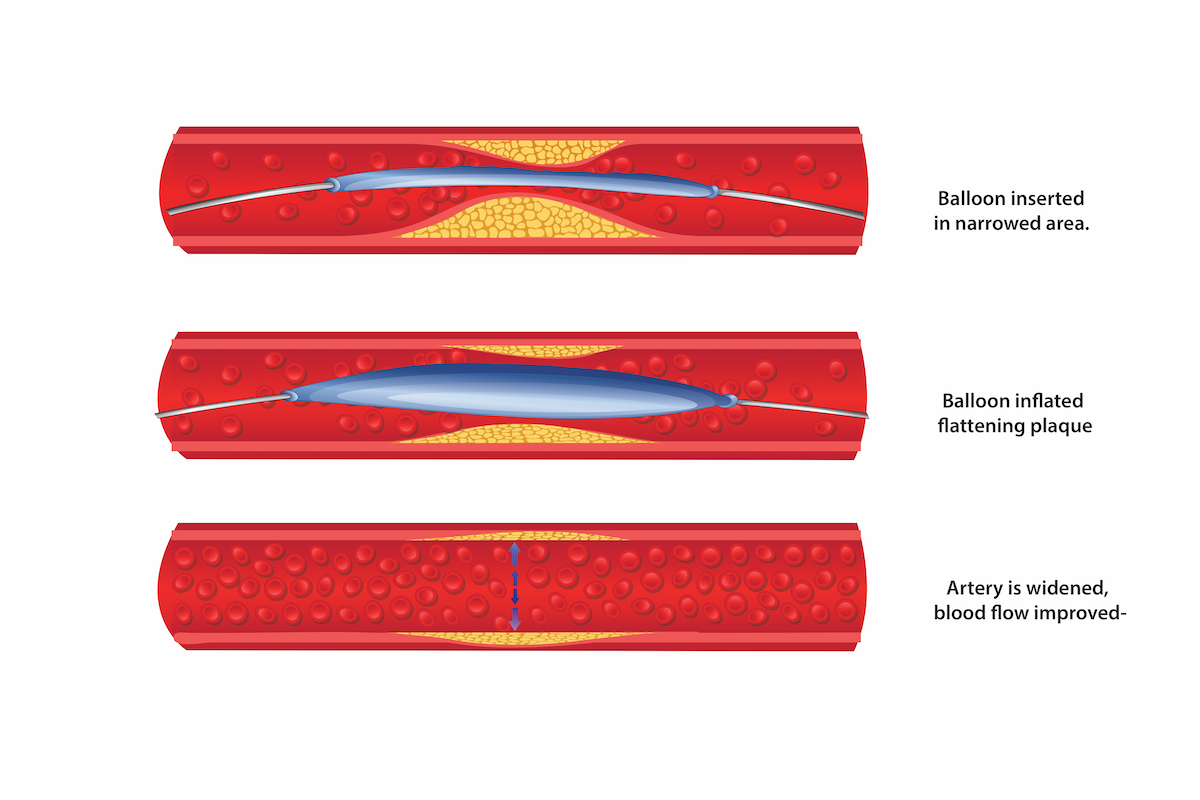PERIPHERAL ANGIOGRAM, ANGIOPLASTY & STENTING
Peripheral angiogram is a minimally invasive procedure done through a pinhole to evaluate the blood flow to the lower extremities by using contrast (dye.) If significant narrowing or blockage of the artery is noted, a special device called atherectomy might be used, along with angioplasty, in which a balloon is inflated to open the artery. If needed, a stent might also be used to keep the artery open. The goal is to improve the blood flow and help with alleviating leg and foot pain, healing wound or ulcer, and preventing amputation
Patients are typically discharged in 2-6 hours after the procedure and recover at home. They should be able to go back to their routine in about 2 days.
How should I prepare?
- Tell your doctor about all the medications you take, including herbal supplements. List any allergies, especially to local anesthetic, general anesthesia or to contrast materials. Your doctor may tell you to stop taking aspirin, nonsteroidal anti-inflammatory drugs (NSAIDs) or blood thinners before your procedure.
- Tell your doctor about recent illnesses or other medical conditions.
- Women should always inform their physician and x-ray technologist if there is any possibility that they are pregnant. Many imaging tests are not performed during pregnancy so as not to expose the fetus to radiation.
- In most cases, you should take your usual medications, especially blood pressure medications. Take these with sips of water on the morning of your procedure
- Other than medications, your doctor may tell you to not eat or drink anything for up to 6 hours before your procedure.

